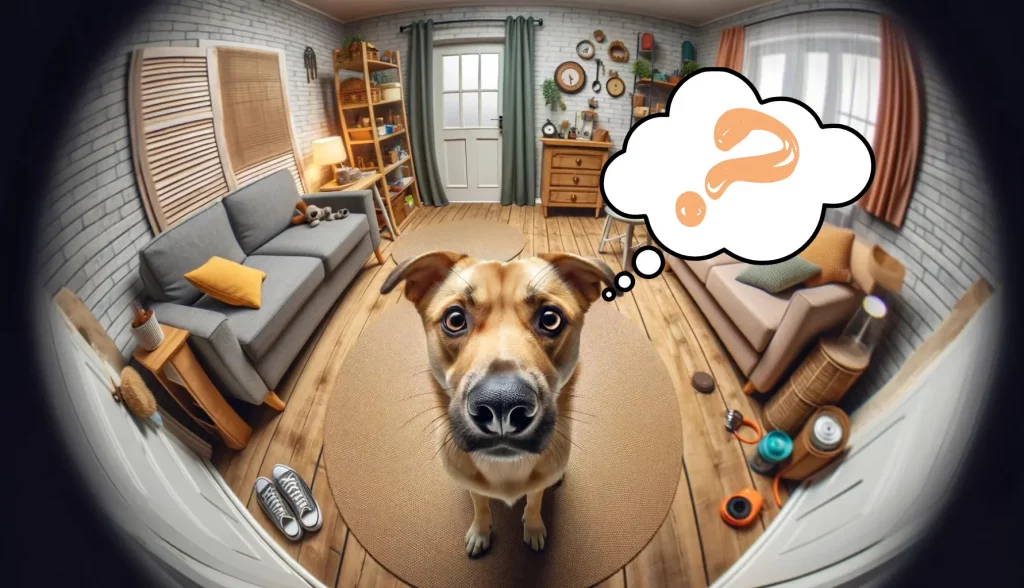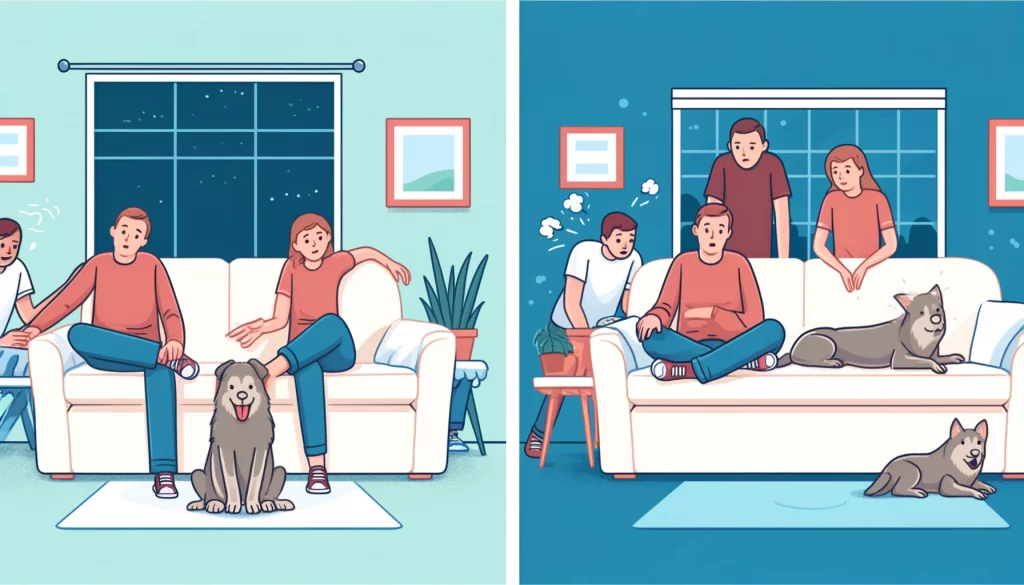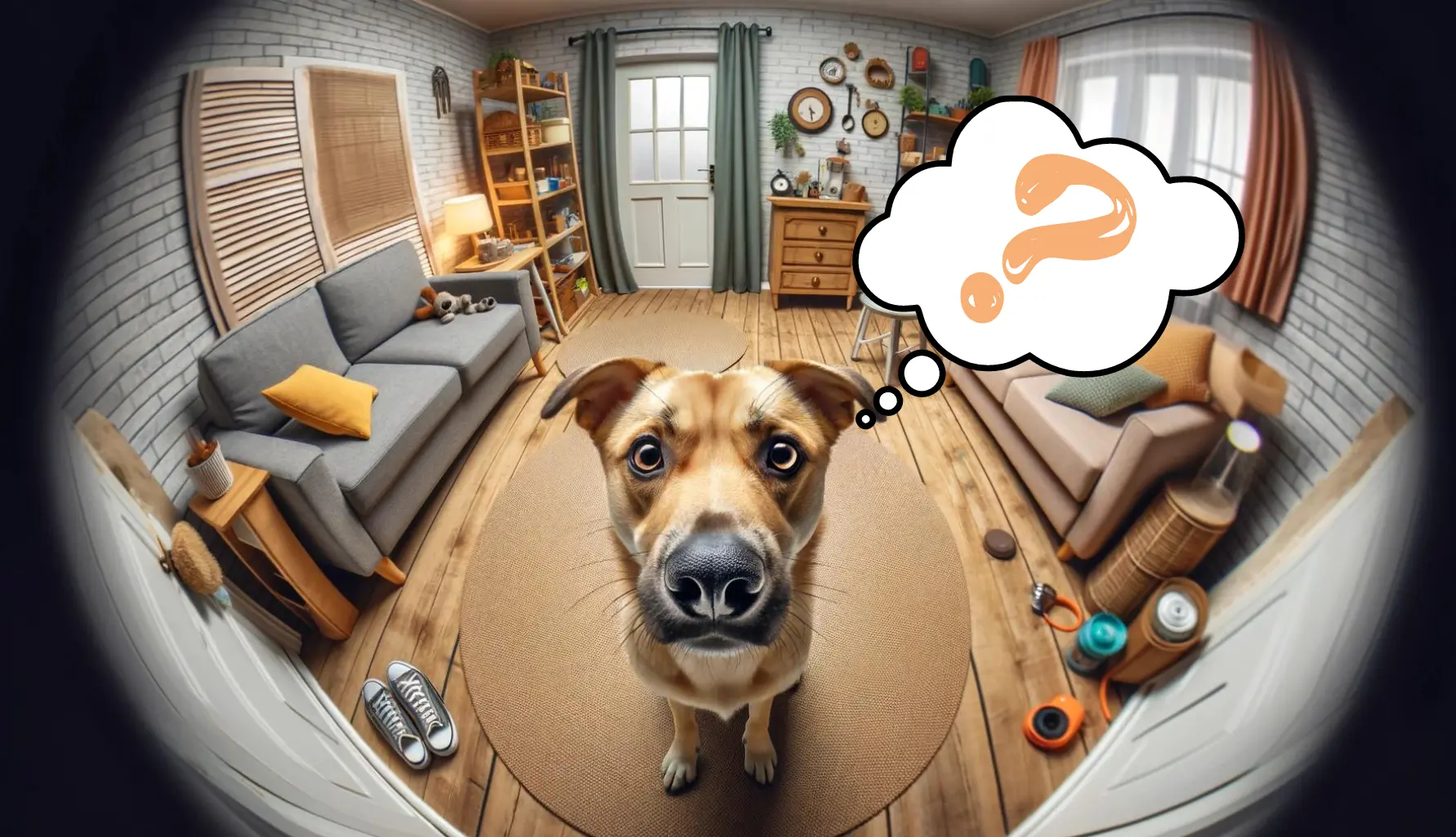Ever wonder why your dog doesn’t listen to you? You’re not alone. Many dog owners make one critical mistake that worsens this issue: inconsistency in training. In this article, we’ll explore why consistent training is crucial and provide simple tips to help you become more consistent with your dog’s training.
Understanding Inconsistent Training
What is Inconsistent Training?

Well, inconsistent training happens when you don’t stick to the same rules, commands, and routines with your dog. This could mean using different words for the same command, changing how you reward or punish behaviors, and being unpredictable about enforcing rules.
Why Consistency Matters
Dogs love routines. They need to know what to expect to feel secure and learn effectively. Consistency in training helps them understand what you want from them.
The Importance of Routine
- Predictability: Dogs feel safer when they know what’s going to happen.
- Learning: Repeating the same commands and rules helps dogs learn faster and remember better.
- Behavior Management: Keeping rules and consequences consistent prevents bad behaviors from developing.
How Inconsistency Affects Your Dog
Confusion and Frustration
- Mixed Signals: If you’re inconsistent, your dog gets mixed messages. For example, if you sometimes let your dog jump on you and other times you don’t, they won’t know what’s allowed.
- Uncertainty: Dogs get anxious if they can’t predict your reactions. This can lead to stress and bad behaviors like barking or chewing on things they shouldn’t.
Development of Bad Habits
- Reinforcing Negative Behaviors: Inconsistent training can accidentally encourage bad habits. For instance, if you sometimes give in when your dog begs for food, they learn to keep begging.
- Increased Misbehavior: Without clear rules, dogs will try different things to see what they can get away with. This can lead to more misbehavior.
Setting Clear Expectations
To help your dog succeed, you need to set clear expectations. Here’s how:
- Consistent Commands: Always use the same words and hand signals for each command.
- Predictable Consequences: Follow through with the same rewards or corrections every time.
- Unified Approach: Make sure everyone in your household uses the same rules and commands.
Picture this: you’re trying to teach your dog to stay off the furniture. One day, you let them snuggle with you on the couch; however, the next day, you scold them for getting on the couch when guests are over. As a result, your dog is now confused because they don’t understand why the rules changed. Consequently, this confusion leads to frustration for both of you, which, in turn, makes training harder.
Common Examples of Inconsistent Training

Example 1: Furniture Rules
Scenario: Changing Rules About Furniture
Imagine you let your dog on the couch to cuddle with you sometimes, but other times you scold them for being on the couch. This inconsistency sends mixed messages to your dog.
Why It’s a Problem
- Confusion: Dogs don’t understand why they’re allowed on the couch one day and not the next. This inconsistency confuses them and makes them anxious.
- Mixed Signals: Your dog may think getting on the couch is a way to get your attention, whether positive or negative. This inconsistency can lead to persistent behavior problems.
Tips for Consistent Furniture Rules
- Decide on the Rule: Choose whether your dog is allowed on the furniture or not. Make sure everyone in the household agrees on this rule.
- Create a Comfortable Space: If you decide your dog shouldn’t be on the furniture, provide a cozy dog bed or a designated spot with their favorite blanket. Reward them for using their own space.
- Enforce the Rule Consistently: If your dog jumps on the couch, gently guide them off and direct them to their designated spot. Reward them when they stay there.
- Use Positive Reinforcement: Praise and give treats whenever your dog chooses to stay off the furniture on their own.
Example 2: Jumping Up on People
Scenario: Inconsistent Responses to Jumping
Sometimes you let your dog jump up to greet you or guests, but other times you push them down and scold them. This sends mixed signals about what’s acceptable.
Why It’s a Problem
- Natural Behavior: Jumping up is a natural way for dogs to greet people. Inconsistent responses confuse them about when it’s okay.
- Safety Concerns: Inconsistent rules can lead to unsafe situations, especially if your dog jumps on children or elderly people who might be knocked over.
Tips for Consistent Rules on Jumping Up
- Decide on the Rule: Make it clear that jumping up is never acceptable. Ensure everyone in the household and guests know and follow this rule.
- Teach an Alternative Greeting: Train your dog to greet people with all four paws on the ground or by sitting. Reward them for staying calm.
- Ignore Jumping: When your dog jumps up, turn away and ignore them. Only give attention when all four paws are on the ground.
- Reward Good Behavior: Always praise and reward your dog for greeting people calmly.
- Be Consistent with Everyone: Ensure that all family members and visitors follow the same rule to avoid confusing your dog.
Example 3: Commands and Cues
Scenario: Using Different Commands for the Same Action
Sometimes you use “sit,” and other times you use “sit down” for the same action. This inconsistency confuses your dog.
Why Consistent Commands Matter
- Repetition and Learning: Dogs learn through repetition. Using different words for the same command makes it harder for them to understand and remember.
- Reliable Responses: Consistent commands help your dog respond reliably because they know exactly what you expect.
Tips for Using Consistent Commands
- Agree on Commands: Sit down with everyone in your household and agree on specific commands for each action.
- Practice Regularly: Use the agreed-upon commands consistently during training sessions. Practice often to reinforce learning.
- Ensure Everyone Uses the Same Commands: Make sure family members, friends, and visitors all use the same commands to avoid confusing your dog.
- Use Positive Reinforcement: Reward your dog with treats, praise, or playtime when they follow a command correctly.
Real-Life Scenarios and Solutions
Scenario 1: Teaching “Sit”
To teach “sit,” always use the same word and hand signal. Say “sit” and use a hand gesture to guide your dog into a sitting position. Reward them immediately when they sit. Practicing this regularly helps your dog learn faster.
Scenario 2: Using “Stay” in Public
When you are out in public, use the command “stay” to keep your dog in place. To reinforce this command, practice in different locations. Always use the same word and reward your dog when they obey the command. Consequently, this consistency helps your dog understand and follow the command, even in distracting environments.
Scenario 3: Calling Your Dog with “Come”
When calling your dog, consistently use the command “come.” Begin by practicing in your yard and other safe spaces. Each time your dog responds and comes to you, reward them to reinforce the command. Consequently, this consistency makes them more likely to respond reliably when called, even in more distracting environments.
Tips for Achieving Consistency in Training
Create a Training Schedule

Why a Schedule Matters
Having a set training schedule helps you and your dog get into a routine. Consistency in timing helps reinforce learning and builds good habits.
How to Set Up a Schedule
- Daily Sessions: Aim for short, daily training sessions of about 10-15 minutes. This keeps your dog engaged without overwhelming them.
- Specific Times: Pick specific times of the day for training, like after breakfast or before dinner. This helps your dog know when to expect training.
- Consistency: Stick to the schedule as much as possible. Regular practice helps reinforce commands and behaviors.
Use a Training Journal
Benefits of a Training Journal
A training journal helps you track progress, identify patterns, and stay consistent. It’s a useful tool for monitoring what works and what needs adjustment.
How to Keep a Training Journal
- Log Sessions: Write down each training session, including the commands practiced, duration, and your dog’s response.
- Note Progress: Record improvements and any difficulties your dog encounters.
- Identify Patterns: Look for trends over time, such as commands your dog struggles with or specific times they perform better.
- Adjust as Needed: Use the information to tweak your training approach for better results.
Be Patient and Persistent
Training takes time, and dogs learn at their own pace. Being patient ensures that your dog feels comfortable and positive about training.
Strategies for Patience and Persistence
- Stay Calm: Keep a calm demeanor during training sessions. Dogs can sense frustration, which may hinder their learning.
- Consistent Practice: Even if progress seems slow, continue practicing regularly. Repetition is key to reinforcing behavior.
- Celebrate Small Wins: Recognize and reward small improvements. Positive reinforcement encourages your dog to keep trying.
- Avoid Punishment: Focus on positive reinforcement rather than punishment. Correct gently and redirect to the desired behavior.
Use Clear Commands
Clear commands help your dog understand exactly what you want them to do. Consistency in language ensures they don’t get confused.
How to Use Clear Commands
- Simple Words: Use simple, one-word commands like “sit,” “stay,” “come,” and “down.”
- Consistent Language: Always use the same word for the same action. Avoid variations like “sit down” or “come here.”
- Tone and Body Language: Be consistent with your tone of voice and body language. Use a firm but friendly tone, and match your body language to the command.
Ensure Consistency from Everyone
Dogs need clear and consistent messages from everyone they interact with. Mixed messages from different people can confuse them.
How to Ensure Consistency
- Family Agreement: Have a family meeting to agree on rules and commands. Make sure everyone understands and follows the same guidelines.
- Educate Guests: Inform visitors of the rules and commands you use. Ask them to follow these guidelines while interacting with your dog.
- Consistency with Professionals: If your dog attends training classes or daycare, ensure that the trainers use the same commands and rules you do at home.
Use Positive Reinforcement
Benefits of Positive Reinforcement
Positive reinforcement encourages your dog to repeat good behavior. It makes training a positive experience for them.
How to Use Positive Reinforcement
- Immediate Rewards: Reward your dog immediately after they perform a desired behavior. This helps them make the connection between the behavior and the reward.
- Variety of Rewards: Use a mix of treats, praise, and playtime to keep your dog motivated.
- Consistency in Rewards: Be consistent with how and when you reward. If you use treats for a command, always use treats until the behavior is well-learned.
Practice in Different Environments

Why Environment Matters
Practicing in different settings helps your dog generalize commands and respond reliably, no matter where they are.
How to Practice in Different Environments
- Start Small: Begin in a quiet, distraction-free area to help your dog focus.
- Gradually Increase Distractions: Slowly introduce more distractions, like practicing in the yard, and then at the park.
- Consistent Commands: Use the same commands and techniques in each new environment to reinforce learning.
Action Plan
Now that you understand the importance of consistent training, it’s time to put these tips into practice. Here are some steps to get started:
- Set Up Your Training Routine: Decide on a daily schedule for short training sessions and stick to it.
- Get Everyone on Board: Have a family meeting to agree on the commands and rules, and ensure everyone follows them.
- Start Tracking Progress: Use a training journal to record each session, noting what works and where improvements are needed.
- Practice Patience: Remember, training takes time. Celebrate small victories and keep practicing.
- Use Rewards Effectively: Always reward your dog immediately for good behavior to reinforce the desired actions.
- Vary Training Environments: Gradually introduce new settings to your training sessions to help your dog adapt to different environments.
We hope these tips help you achieve more consistent and effective training with your dog. Remember, the key to success is patience, persistence, and positivity. If you have any questions or want to share your training experiences, leave a comment below. Don’t forget to subscribe to our blog for more tips and insights on dog training and behavior.
Recommended Reading
Additional Resources



